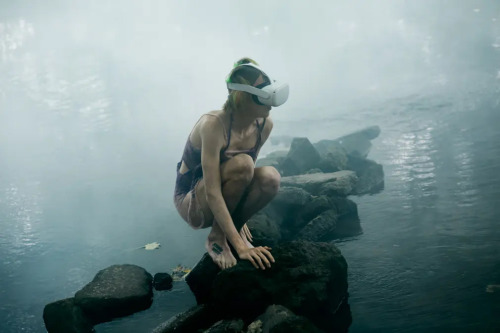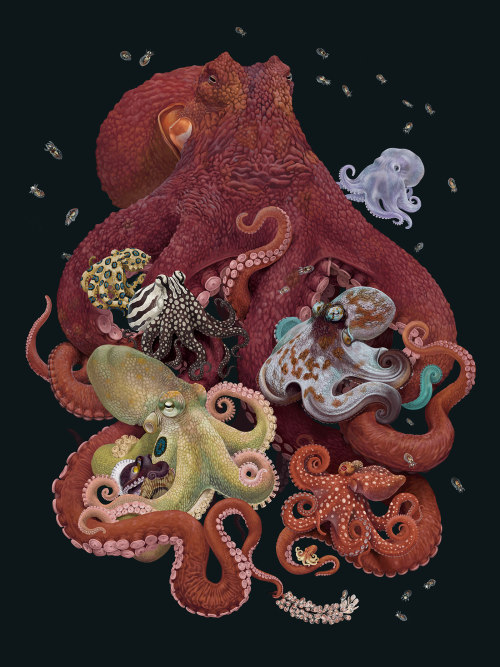HELLO! Hot, isn’t it?
I mean, that’s normal for me, but I imagine those of you currently in HEATWAVE UK will currently all be knotting damp handkerchiefs on your heads and desperately scrabbling down the back of the freezer in search of forgotten Calippos. NOW YOU KNOW WHAT IT FEELS LIKE, JOIN ME IN MY SWEATY PAIN.
I am still Matt, this is still Web Curios, and we’re at that time of the year where I have to literally write this in my pants due to a lack of airconditioning in my flat, so you enjoy that mental image.

By Evan Lane
THE SECTION WHICH STRONGLY RECOMMENDS PLUGGING YOUR OWN NAME INTO THE DALL-E THING AS A USEFUL STEP TOWARDS EGO DEATH, PT.1:
- Weird Dall-E: It’s been quite odd watching the Dall-E Mini toy (featured in Curios a whole month ago chiz chiz) spread across the web over the past fortnight – partly due to the fact that the general sense of wonderment at the idea of AI-generated imagery has rather worn off for me after a few years of staring at the stuff (so old! So jaded!), but also because of what it reveals about us through what people choose to do with it. The Dall-E explosion has seen a proliferation of accompanying accounts aggregating people’s more successful (or simply odd) attempts at machine-wrangling – Weird Dall-E is one, but you can read about a whole load more in this piece – and it turns out that what we really want machines to imagine for us is…pop culture characters in unusual settings! I think there’s something super-interesting in this, and it’s a theme that crops up a few times in Curios this week – everything is a remix now, as Kirby Ferguson determined a decade ago, and it seems that we are only capable of asking the machines to imagine stuff along the template of ‘what about x, but in y?’ So these accounts feature lots of self-consciously-grotesque (and admittedly ‘funny’) things like ‘The tellytubbies on trial at Nuremberg’, say, or ‘Mrs Potatohead bikini calendar’ (the latter is a joke, but it upsets me that that’s where my mind chose to go), but less really baroque stuff along the lines of “a shining, chitinous slave army” or “teeth go wild”. Which, of course, is a factor of the software – this is trained on imagesets of stuff from real life/pop culture, meaning its ability to ‘imagine’ is closely tied to the source material, meaning that obviously the software gives ‘better’ results when asked to create things that have well-defined sources/definitions – but I find it interesting to think about the extent to which this may end with us falling into even more of an infinitely-recursive spiral of navelgazing and cultural exhumation than we already find ourselves in. Alternatively, though, you can not think about any of that stuff – you’re here for a good time (lol!), not a hard time! – and instead just enjoy looking at ‘Club Penguin Osama Bin Laden’ and ‘Gaming Diaper’.
- The Anna Delvey NFTs: The news this week that Anna ‘The Scammer’ Delvey – you know, that woman who basically pretended to be an heiress in New York a few years back and by so doing managed to effectively steal a bunch of money from some very, very gullible and very, very rich Manhattan socialites – was set to release a bunch of NFTs was a probably-inevitable extension of the woman’s ‘brand’ (Caroline Calloway has an awful lot to answer for); I wasn’t prepared for the accompanying project website to be quite so special, though. “She’s been a fashion student, nightlife icon, curator, connector & critic, entrepreneur, visionary, go-getter, world traveler, and of course, Riker’s Island inmate #19G0366….Anna’s first creative endeavor since the world learned her name marks the beginning of the next chapter of her life. After letting someone else tell her story, Anna’s ready to speak for herself and will be offering access to the public to reach her directly for the first time ever. She’s moving on from the events of the past that were extensively documented in the mainstream media and on the popular Netflix series Inventing Anna. Now her friends, fans and haters can support Anna and join the next part of her infamous life story” SOUNDS TEMPTING, RIGHT? No? Hang on, though, listen to these benefits: “All holders of the Reinventing Anna NFT will get “access to Anna” via exclusive live streams and other online and metaverse events, and a select group of top holders will have access to coveted personal items from her time in prison, personal sketches drawn by Anna herself, and even one-on-one calls with Anna. In addition to our immediate utility for holders, we‘re also planning future surprises in the from of airdrops and more. These rewards will be based on varying criteria per drop. This could range from simply being a holder of one of her NFTs, or reward more dedicated fans based on the number of tokens you hold or how long you’ve been holding. With that in mind, we recommend holding as long as you can!” The sample ‘artwork’ you are getting along with your NFT is not particularly well-defined, but the example on the homepage seems to feature a cartoon (a very badly-drawn cartoon) in which a female inmate (presumably Delvey) has a through-glass phone conversation with a visitor to whom she says “You Look Poor”. So, er, that’s nice. I am honestly floored by the fact that we live in a world in which a convicted fraudster can play on said fraud by releasing a line of merchandise on a platform notorious itself for being largely fraudulent, and that this can be considered a ‘viable business move’. Everything is mad and stupid.
- Web3 Saint Laurent: It’s not been a good few weeks for the whole world of cryptocurrency and NFTs and, by association, web3 (YES I KNOW THAT THEY ARE ALL DIFFERENT THINGS SHUT UP SHUT UP), but, equally, there has been far too much money spent on very publicly betting on this stuff by too many large businesses for anyone to start admitting that perhaps the emperor is, ok, fine, a bit naked. So it is with the fashion world, which continues to go ALL-IN on this stuff with the gay abandon of an industry that knows that, whatever happens, there will always be enough top-of-the-pyramid plutes willing to spend six figures on luxe goods to keep them in cocaine for the foreseeable. Clinique is creating DIGITAL COSMETICS FOR AVATARS, Roblox now features GUCCITOWN (you;re never too young to covet!), and YSL is…actually I have no fcuking clue what YSL is doing if I’m honest. As my friend Alex, who sent this to me, pointed out, you can practically taste the cocaine in the copy: “To us, web3 holds the promise of intensified experiences, where artistic reinvention and genuine emotions collide. Join us on this journey so you can EXPLORE DEEPLY and LIVE INTENSELY. Together, let’s invent a place where everyone can feel confident, audacious, empowered and most of all, FREE. On this path into the unknown, we believe there is room to play with the codes of beauty, to push the boundaries and help shape a bolder present. On the edge of reality. To live unapologetically.” Er, right you are then. What this means is…unclear, but there will be NFT drops! And a community! Still, LIVE UNAPOLOGETICALLY! Through the medium of lipstick, powder and paint! If this appeals then you may want to also bookmark this page, which is currently the holding site for THE WORLD’S FIRST METAVERSAL PERFUME which obviously is a staggeringly stupid phrase and which equally-obviously is going to inevitably involve attempting to charge people several-hundred pounds to ‘REDEFINE SMELL’ or somesuch bunkum. It’s still not entirely clear to me what all these people mean when they talk about ‘web3’, but I’m increasingly convinced that, in the main, the words ‘fools’, ‘parted’ and ‘money’ feature quite heavily in most working definitions.
- Pills: A couple of cycles ago in NFT hypeland it seemed that all new drops needed a ROADMAP, which roadmap would almost inevitably feature vague, poorly-articulated promises of a GAME which would enable users to eventually do something with their expensive link to a poorly-drawn avatar other than use it as their profile picture so that strangers know to hate them. None of these ‘games’ seem to have any real prospect of ever actually being built – except for this one, called Pills, which apparently launched some ACTUAL GAMEPLAY EXPERIENCE this week. So what does Web3 NFT on-chain gaming look like? Does it live up to the EXCITING VISION outlined by Nicolas Vereecke the other week? No! No it doesn’t! The ‘game’, as far as I can tell, is a short demo experience in which you get to use your PERSONAL ON-CHAIN AVATAR to do a short fetch-quest – and that’s it! Still, that was DEFINITELY worth you spending several hundred quid to use a poor-quality character creator! There’s no indication that Pills will ever end up being more than a selection of discrete ‘game’ experiences which users will be able to access with their NFT avatar – the ‘interoperability’ on offer here seems to be little more than ‘you accrue stuff that travels with your avatar from one discrete game experience to another’, but, er, isn’t that just ‘keep your upgrades between levels’ in a normal game? HOW IS ANY OF THIS GOOD OR WORTHWHILE?!?!?! I will reveal the secret to you – it is not! At all! IT IS ALL A MASSIVE FCUKING SCAM HOW IS THIS STUFF STILL GAINING TRACTION?!?! Anyway, you can download the demo and experience the future of gaming yourself (and then delete it again when you realise that, yet again, the future looks RUBBISH).
- Brainblots: Yes, ok, fine, ANOTHER NFT thing – this link is just to the Twitter account, though, so that’s probably ok. “An exclusive BCI (Brain-Computer Interface) NFT collection featuring rorschach-inspired art from brainwaves of 100 people doing what they love“ – the ‘artworks’ for sale as part of this collection are basically animated brainscans, which are featured on this feed and which are a really cool thing to see pop up on the TL every now and again. I would 100% love to have a video representation of what my brain activity looks like when I think of interesting things that I enjoy (‘the internet’, ‘weed’, ‘icecream’, ‘the sweet release of death’, that sort of thing).
- The CEOlympics: After last year’s Euros/Olymics double bill, this Summer feels a touch sport-light to me – which is why I was so THRILLED to discover that there is at least one MASSIVELY IMPORTANT and HUGELY PRESTIGIOUS competition happening this year that we can all get behind. Welcome one, welcome all, to the CEOLYMPICS, “the First-Ever Live Streamed International CEO Competition, organized to provide a platform for executives to prove their skills in a public domain whilst raising funds for causes of their choosing.” Are YOU excited? I’M EXCITED! I am genuinely upset that I didn’t find out about this earlier in the year – apparently there were open applications for a place at the CEOLYMPICS (I don’t think I can stop capitalising this, sorry), but those are now all done with meaning that you sadly won’t be able to nominate your own personal glorious leader for a place at the big table (I imagine Mark and Andy and Elon are already going through some sort of exacting training regimen in preparation) – but now that I know it’s happening I can barely contain my excitement. So what will the CEOLYMPICS entail? Er, that’s where details get a bit fuzzy. All I know is that it will take place in October/November, and that CEOs will be tested across three main areas – vision, management and investment – and that there will be TASKS! Except the nature of the tasks will only be revealed the week beforehand, so sadly I can’t get you hyped about, I don’t know, the 100m Freestyle Shareholder Presentation. Still, the prose on the website is pleasingly robust – “Build businesses and teams to grow and sustain the businesses; this journey will be simulated throughout the competition. Pick winners or get picked apart” – which makes me hope that at some point this is going to boil down to the final remaining CEOs naked and oiled and glistening and covered in sweat and the viscera of the fallen, preparing to rip each other limb from limb to demonstrate their unflinching and unwavering commitment to shareholder value. Honestly, this…this can’t be a real thing, can it?
- Waxinvest: As we cheerfully look forward to double-digit inflation, rising mortgages, falling wages and the prospect of the £3 potato looming large in our futures, I imagine the question on most of your lips is ‘what should I invest in next????’ Erm. Still, in the unlikely event that you’re sitting on some savings that aren’t doing anything and which you would like to seek to turn into more money for the aforementioned three-quid spuds, you could do worse than take a look at WaxInvest, a platform which offers you the opportunity to, er, invest in a bunch of high-tech new businesses (like Seedrs, or similar platforms which have been around for a decade or so). What’s interesting about Wax is its focus on robotics and AI-led businesses – not because I think these are necessarily better investment opportunities (lol like I know anything about investing or business or indeed anything, DO NOT LISTEN TO ANYTHING I SAY I AM LITERALLY A MORON), but because it’s a decent way of getting a feel for prevailing trends in ‘stuff that people think they can make money automating’. So there is a robot pizza making setup, for example, being touted as a potential global solution for low-overhead food production with THEATRE in high-footfall public spaces, or a robot fruit harvesting setup for smaller growers…obviously I don’t expect that anyone reading this is going to have a spare £30k lying around that they want to punt on a mechanical piazzaiolo, but it’s a really interesting site in terms of ‘where robotics is expanding into’.
- Filmot: A truly amazing YouTube search engine. Type in anything you fancy and Filmot will spit out a variety of YouTube clips featuring the requested phrase, meaning that you too will in a matter of moments be able to cobble together your very own SATIRICAL SUPERCUT in the style of Cassetteboy! This is superb and weirdly-compelling – I just fell into a small narcissistic rabbithole when I discovered that there are 237 clips featuring the words “matt muir”, for example, and have learned that there is a Matt Muir mountain in Connecticut which is am now going to tell all small children I meet is named after me – and I think you will enjoy it.
- Google Blacklist: This is potentially really useful – a browser extension which lets you block specific domains from your Google results. SUPERB if you’re someone whose field of research or interest is peppered with Bad Sources, or if you’re the sort of plannerstrategistperson who physically recoils at having to use Statista data in your work (but, honestly, WHO CARES? ALL YOU ARE DOING IS BUILDING AN ARGUMENT IT DOESN’T HAVE TO BE RIGHT IT JUST HAS TO BE COMPELLING AND CONVINCING STOP BEING SO FCUKING PRECIOUS, IT’S ALL STUPID LIES IN ANY CASE!).
- Finch: I found this…a bit sad, but you may feel differently. Finch is an app which effectively seeks to gamify the concept of ‘self-care’ via the medium of a basic Tamagotchi-type interface; you have your little digital pet, and you care for and nurture it by taking care of yourself. So small acts of self-care become in-game treats and rewards for your digital friend, with the idea I presume being that whilst depressed people or people with specific neurodivergent behaviour types may struggle for motivation to care for themselves, but will find it significantly easier to take steps to care for a cute third party, even one that lives on their phone. I get this – honestly, I do – but I can’t help but get incredibly emo at the idea of needing a nonexistent digital bird to persuade you to, I don’t know, drink water. In a more abstract sense, I’m quite interested in this newish wave of gamification mechanics – I remember a decade or so ago when it was all badges, but stuff like this feels significantly stickier.
- LofiMusic: I know that lofi as a genre is a bit ‘a couple of online generations ago’, but I personally think it’s a bit unfairly-maligned (I perhaps think this as I spent an awful lot of money on records in the mid-90s that sounded not a million miles away from this stuff, and therefore am maybe slightly defensive about its current status as digital elevator sounds) and there’s some quite interesting stuff being done by certain producres in the space – anyway, LoFiMusic is a small site compiling different streams by a bunch of producers from around the world, with a bit of artist detail on their work and links to their stuff, and if you’re a fan of minimal beats and melody then this is worth a spelunk.
- The CPU Shack: Do YOU love CPUs? Probably not as much as the person who has been running this site for two decades. “I have always been interested in CPUs and collecting things, so in 1999 I decided to put them together and began collecting CPUs. I bought some off of eBay, I got many from old boat anchor computers and many many more were generously donated from people at various forums around the web. When I had roughly 400 processors I began to scan them in (front and back) ohhh what a tedious job that was. I now have 1188 (as of 09-13-2004) unique CPUs in the collection, from 66 different manufactures. They range in speed from 108kHz to 1.7GHz. and span 31 years of computer history. The CPU Shack went live January 30, 2002 and has been growing ever since.” TWO DECADES OF POSTING UPDATES ABOUT THINGS LIKE THE HISTORY OF PROCESSOR DEVELOPMENT IN 1970s RUSSIA! Honestly, while I can’t pretend to have any personal interesting chip speeds and soldering, I am so so so happy that this site not only exists but is still being updated on a weekly basis. TWO DECADES! I think there should be medals for things like this. Can we campaign for some sort of global digital title or honour? Actually that’s a great idea – like some sort of Unicode consortium devoted to celebrating people who through their indefatigable obsession make the web a more interesting and generally better place. In fact, for the right brand that is a GREAT idea – you can have that for free (as long as I get some sort of award for Curios).
- Anonfriendly: I am all for a working culture that doesn’t require going to the office, and see no particular reason why someone who, like me and I presume you, does a largely pointless job that involves a bit of thinking and a LOT of putting words into boxes on slides, needs to be in a particular physical space to do that. I do, though, think that on balance it’s probably not unreasonable for an employer to know who it is that they are employing – but perhaps that makes me an irredeemable square, shamelessly in thrall to The Man, who knows. If you are also of the opinion that whoever pays your wages doesn’t need to know anything about you other than possibly a PayPal address then you may like this website which lists jobs that will apparently hire you without knowing who the fcuk you are. Suitable for any readers who are criminals (or planning on imminently becoming such).

By Michael Dumontier & Neil Farber
THE SECTION WHICH STRONGLY RECOMMENDS PLUGGING YOUR OWN NAME INTO THE DALL-E THING AS A USEFUL STEP TOWARDS EGO DEATH, PT.2:
- Felt: Felt describes itself as ‘the best way to make maps on the internet’ and whilst, fine, that might be a touch hubristic, it does seem quite good, and we all know that that’s basically the best you can hope for with anything. Felt is a project by an international team (seemingly mostly split between North America and Spain, and with one team member who has possibly the most powerful bio photo I have ever seen on a professional website – you will know who I mean when I see them) which is designed to make collaborative mapmaking including multiple data sources an easier job than it is with OpenMap or Google, and which is generally just a softer, more pleasant-looking platform than the other, more famous ones. Your mileage will inevitably vary depending on how much cartographical work you need to get through, but in general this looks like a great tool to make better, more-aesthetically-pleasing, mapwork about whatever you like.
- iRchiver: If you’re a journalist or researcher this is potentially gold-dust. The gimmick for this (admittedly horribly-named) services is as follows – iRchiver promises “automatic screenshots of everything you saw on the web, and full-text search for your browsing history”, meaning that you can effectively keep an ‘as I saw it’ record of your browsing history, impervious to later edits and the evanescent nature of social media. The data is all stored locally, meaning minimal privacy implications as far as I can see, and the potential utility of the service is huge – oh, and it’s free. Caveat emptor, as ever, but presuming that this isn’t some sort of massive lie or criminal data-harvesting scam then it seems like a hugely-helpful tool for all sorts of things (not least as a cast-iron “YOU DID SAY THAT I HAVE THE FCUKING RECEIPTS!”-guarantor).
- Recall: ANOTHER potentially-useful research tool here, this is a bit Evernote-lite (and no worse for it – Evernote is a bloated mess of a thing, and it occasionally makes me sad when I think how badly the developers have screwed up what for a while seemed like a genuinely groundbreaking piece of software) and strikes me as the sort of thing that would be hugely useful to help you with a new project or line of enquiry. Recall is basically a combination notes app, letting you create research entries drawing in material from across the web in one place, RSS feed (making those notes dynamic by plugging in new material as it’s published online) and thematic classifier (letting you make connections between notes for the development of broader thinking). Were I a more thorough and professional person this is exactly the sort of thing I might use when doing research for a new brief or client rather than the 10m of lackadaisical Googling which I like to pass of as ‘enough’.
- The Airport Spider: This is probably a really impressive example of code, but I love it mainly for the aesthetics. Go anywhere on this map and the display will automatically update to show you the 8 nearest airports to wherever you find yourself on the planet – useful, for example, if you’re trying to work out whether the Ryanair flight to is actually going to save you any money when you factor in the cab ride from the ‘local airport’ 280 miles away from your hotel. More importantly, though, moving around the map makes it look as though a giant red spider is bestriding the earth like some sort of arachnid colossus, and who doesn’t love that? NO FCUKER, that’s who!
- The Big Picture Competition Winners 2022: You know the drill by now – AMAZING PHOTOS OF AMAZING THINGS! One of the nice things about the web bringing high-quality photography onto everyone’s personal screens is the realisation that there really is no limit to the amazement one can feel when confronted with the beauty of the natural world (and I say that as someone so cynical, so jaded, that I think I last felt genuine happiness at some point in 2009), and despite the fact that I feature approximately a dozen different photo comps in Curios each year I can still get amazed by the shots featured in each selection. These are no exception – who knew that bees occasionally copulated in sexy, orgiastic masses known as BEE BALLS, for example? A warning before you click – a couple of these feature dead animals, which, you know, is JUST A FACT OF LIFE, but if you’d prefer not to see any deceased critters then perhaps scroll with caution (the photo of the frogs is particularly-brutal on close inspection).
- Virtual Graph Paper: Obviously when I found this link I was fully expecting to ignore it, and then I clicked on it for some reason and then I looked up and it was 10 minutes later and I had just spent a significant amount of time basically flashing back to being 14 and in maths class and wasting the whole lesson (lol wasting! It was a significantly better use of my time than maths, and I won’t let you use my career-limiting inability to do anything much beyond basic multiplication to prove me otherwise!) drawing intricate perspective structures and robots and stuff like that. Basically this a lot more fun and engaging than I expected it to be, and you may well find the same (but, er, bear in mind that it is literally just virtual graph paper and if you expect significantly more than that you may well be somewhat disappointed).
- Sheng Lam: I know literally nothing about this person other than that they are evidently a very talented illustrator and I love their style immoderately – this is an odd fusion of technical drawing, Japanese-style mecha-illustration, and cyberpunk doodlings, and the work is GREAT.
- Common Voice: Common Voice is a project by Mozilla, which is looking to “help make voice recognition open and accessible to everyone. Now you can donate your voice to help us build an open-source voice database that anyone can use to make innovative apps for devices and the web. Read a sentence to help machines learn how real people speak. Check the work of other contributors to improve the quality…At present, most voice datasets are owned by companies, which stifles innovation. Voice datasets also underrepresent: non-English speakers, people of colour, disabled people, women and LGBTQIA+ people. This means that voice-enabled technology doesn’t work at all for many languages, and where it does work, it may not perform equally well for everyone. We want to change that by mobilising people everywhere to share their voice.” This is A Good Thing imho, and Mozilla is an organisation that doesn’t, as a rule, tend to the evil, so if you can spare a few minutes to provide a voice recording I would urge you to do so.
- CaptionIt: Ok, this is obviously VERY GEEKY – it’s a Github repository of code – but also SO SCIFI! Basically this link will give you all the instructions you need to build your very own SUBTITLING GLASSES (or even to order a pair, should you be the sort of technical incompetent, like me, who wouldn’t know the first thing about ‘creating a magical pair of listening specs’) – glasses which will listen to whatever anyone’s saying to you and project a transcript of their words into your field of vision. This is honestly amazing – if you’re hard of hearing, I can only guess at the incredible difference that something like this (which, let me reiterate, YOU CAN LITERALLY BUILD YOURSELF WITH OPEN-SOURCE CODE!!) could make. See, sometimes it is possible to feel positive about the future!
- Vampr: For every band origin story in which someone answered a personal ad in the NME and then found fame, fortune and inevitable addiction-and-rehab as a result, there must be an even-more-significant number of world-beating groups that could have been but never were because the right person didn’t happen to see the small classified ad in the newsagent’s window in Skipton in 1994. Now, though, thanks to the MAGIC OF THE WEB, bands need never want for a bassist or drummer or triangle player again – Vampr is (and there’s no way of painting this as anything other than bleak, but hey ho) LINKEDIN, FOR THE MUSIC INDUSTRY! So you can use it to list yourself and find talent to work with if you’re seeking a specific person to complete your sound, but you can also use the platform to list your music on streaming platforms, and make it available for commercial use and licensing, and, look, I can imagine that this is all really useful stuff but, equally, WHERE IS THE SERENDIPITY AND JOY?!?! I know that there is literally no correlation whatsoever between the perceived romance of a band’s origin story and the quality of their output, but, equally “where did you meet?” “I found them all on a website based on their location, availability, talent, and willingness to split any eventual royalties in a manner favourable to me, the songwriter” lacks a certain sparkle imho.
- Dinosaur Pictures: “Welcome to the internet’s largest dinosaur database. Check out a random dinosaur, search for one below, or look at our interactive globe of ancient Earth! Whether you are a kid, student, or teacher, you’ll find a rich set of dinosaur names, pictures, and facts here. This site is built with PaleoDB, a scientific database assembled by hundreds of paleontologists over the past two decades. DinosaurPictures.org curates high quality, realistic illustrations of dinosaurs and other ancient creatures.” There are over 1300 dinosaur pictures on here, which should keep even the most dino-hungry child occupied for a few hours (I don’t know why I assume that the only people that this will be of interest to are 5 year old boys, apologies to any adult dino enthusiasts I am inadvertently belittling here).
- World Ending Game: Perennial Web Curios favourite Everest Pipkin returns with another fascinating project – this isn’t web-based, but instead is an adjunct to whatever tabletop roleplaying campaign you may already be indulging in. World Ending Game is a set of rules and games to allow you to definitively end your game experience, with the sort of denouement that Hollywood excels at; a cathartic ending-and-credits-and-post-credits sequence designed to work within whatever world and ruleset you’re already using. “World Ending Game is a tabletop game written to serve as the last session of a campaign in any system. It should come after the finale, whatever that is for your table; the dragon defeated, the government felled, finals week over, the great mystery solved. World Ending Game does not have mechanics for deciding big story outcomes. Instead, it offers a series of scenes and vignettes towards closure.” You have to pay to download the PDF (or indeed to buy a physical copy), but it’s such a clever idea that $15 is a small price to pay. Think of it as effectively allowing you to create your own version of the little ‘superheroes all go for a kebab’ vignette at the end of whichever bloody MCU film that is (I have never seen said film in its entirety, but it’s been on TV often enough that I have seen that particular ‘funny’ sequence about 7 times now).
- Penga: Matt Round’s latest ‘small but perfectly-formed piece of internet timewasting is Penga, a simple but deceptively-addictive game where your job is to remove penguins from an icy stack, one by one, without disturbing the emperor at the top of the pile. Lovely artwork by Happytoast, nice SFX and a proper challenge, this is worth keeping open and returning to as a regular decompression tool when the heat and the stupidity and the general pointlessness of it all start to get a bit much.
- Resident Evil Village: Last up this week, something so magical in its coding that I am not entirely convinced it’s not magic. This is a demo of part of the latest Resident Evil game, playable entirely in your browser, which works even if you’re on a frankly appalling internet connection which is only marginally-faster than 4g (I know because that is exactly the sort of hi-tech luxuriant setup I am working with here in Rome), and, honestly, this is insanely impressive and makes me think that there’s quite likely to never be another console generation after this one because why not just stream this stuff? Be aware that it’s a bit scary, and a bit violent, but mostly just gawp at the fact that this exists, and think back to how far we’ve come since Newgrounds and Yetigames.

By Ninnnnnki
LAST UP IN THE MIXES, ENJOY THIS CRACKER FROM RINSE FM FEATURING MCING BY MANGA AND KILLA P!
THE CIRCUS OF TUMBLRS WHICH IS ONCE AGAIN SADLY EMPTY AND WHICH MADE SENSE BACK WHEN SINGLE-SERVING TUMBLRS WERE A THING BUT THEY REALLY AREN’T ANY MORE AND THEREFORE THIS SECTION IS BASICALLY REDUNDANT BUT I CAN’T BRING MYSELF TO KILL IT FOR SENTIMENTAL AND VAGUELY-ELEGIAC REASONS AND AS SUCH IT IS JUST GOING TO CONTINUE SITTING HERE, MOSTLY EMPTY, FOR THE FORESEEABLE!
THE TROUGH OF (INSTA) FEEDS!
- Old Shops In Belgium: I mean, it does rather feel that any additional description here might be somewhat redundant.
- Vera van de Seyp: Graphic design and typography and, according to her bio, ‘AI stuff’, this is the work of Vera van de Seyp who I imagine is Belgian or Dutch (sorry Vera, this is a guess and I apologise if I have gotten this totally wrong) and whose work reminds me SO STRONGLY of a certain type of mid-90s club flyer than it’s almost Proustian.
- Kamis World: I don’t quite know how to feel about this. Kami is ‘the world’s first virtual influencer with down’s syndrome’, developed by charity Down Syndrome International, who has been created from the faces of 100 girls with the condition and who exists to provide representation of the condition in virtual space. Obviously this has been created with care and the intentions are all positive – and, look, if it helps kids with down’s feel better about themselves then it is A Good Thing – but I can’t help but feel that the framing of ‘influencer’ is a bit icky. Still, it’s an interesting idea and I am very willing to accept that my slight reservations are silly.
- Homoeroticcowboi4.0: The aesthetics of the fashion world, filtered through a masc queer lens – very big fan of the look here, tedious straight though I am.
- Loving Hand Adoptions: I knew that the world of Sims fandom was a strange and multivalent one, but I had no idea that people were taking roleplaying there to such an extent that there are now adoption services that purport to let players pick and choose from a variety of ‘adoptable’ digital children that they have to apply to rehome. This…look, I don’t think this is very healthy. Is letting people scroll through a list of digital ‘children’ on Insta – each of which has their own lightly-traumatic backstory! So many of these children ‘need help coping with trauma and abuse’! This does not seem like fun! – and then compete for the right to ‘adopt’ them in-game a healthy thing? I do not think it is! Still, I suppose noone’s getting hurt so it’s probably ok – but, honestly, I would love to see what the venn diagram is of ‘people who are into this’ and ‘people who own or are curious about those little realistic stillbirth dolls’ as I reckon it’s probably a circle. If you want to read more about this definitely-totally-normal ‘scene’, you can! Enjoy!
LONG THINGS WHICH ARE LONG!
- Chaos In Current Political Thought: This is SO interesting and struck me as a hugely-useful line of thinking in terms of What The Everliving Fcuk Is Going On? – the article is a review of a recent book by Aris Komporozos-Athanasiou called ”Speculative Communities: Living with Uncertainty in a Financialized World”, and it explains, with admirable clarity, the text’s central premises which are basically encapsulated by this quote: “If the only certainty in our present is that the future is uncertain, then shorting and hedging the unknowable becomes the zeitgeist of contemporary financialized societies.” As I read through this I found myself nodding along like the Churchill dog, not least at the extent to which this maps neatly onto my pet theory about cults and their centrality to the modern experience – I mean, look: “Komporozos-Athanasiou is clear that, as finance’s logic colonizes other spheres, “speculative communities” can and do arise well beyond the narrow confines of markets and trading floors. He suggests that France’s gilets jaunes, the Tea Party, the Occupy movement, and Black Lives Matter each have aspects of speculative communities, even if they are not literally speculating on assets, as all “endorse uncertainty as a condition of possibility,” and generate “a renewed sense of synchronicity and narrative” among participants. The adoring fan base that has sprung up around Musk and Tesla, vehemently defending him and excusing the absurd faults of its electric cars wherever they are besmirched online, is a kind of speculative community as well. After all, nothing says “endorsing uncertainty” and “embracing the unknown” like getting behind the wheel of a car with brakes that might malfunction due to a firmware update made the night before.” I personally found this a fascinating angle from which to look at things.
- Web5: Jack Dorsey is doing Web5! What is Web5? I have literally no fcuking idea whatsoever, and I say that as someone who’s done a reasonable amount of reading about Webs 1 through 3, and who likes to think of themselves as not being totally stupid. And yet, I have looked at these slides several times this week and all I can feel each time is my brain sliding across their content like so many fried eggs across teflon. Web5 is decentralised – that much I got, thanks to the fact that the word appears at least three times on each of the slides in this presentation – and it will enable all sorts of different protocols to be built atop it, and it will work for entities of all types whether individuals or corporations, but beyond that I am honestly utterly baffled. Anyone fancy explaining what this means in really, really simple words?
- The Sentient AI: The discussion this week around the Google engineer who fell in love with his chatbot (I mean, I am obviously being a bit mean here but also, well, that is very much what seems to have happened here) has been dizzying in many ways, not least all the things it taught us about how ready we seem to be as a society to have sensible questions about what ‘sentience’ in fact means and how it’s measured and what the important questions are around the development and evolution of AI. Let’s get this out of the way – the AI is not sentient, as amply argued here. Still, the questions it raises about ‘so, sentience, what is that?’ are interesting and useful and hard (and thought through a bit in this thread), as are the questions it has totally failed to raise, like for example “shouldn’t we be worrying about the very practical realities of how AI is being developed and used now rather than being distracted by the squirrel of presumed sentience?” – one thing that I am now 100% convinced of, though, as a result of this is that within approximately 3-4 years we will absolutely have a religion (CULT!) worshipping an AI, and that religion will be more popular than you might think, and we will 100% not deal with it well as a society.
- The Downward Spiral (or, The Hollowness of Digital Art): This is a superb article if you have any interest in the world of digital image creation and the idea of ‘art’ as something that may or may not be creatable by machine alone. The piece starts with a fairly standard ‘why are NFTs all so sh1t?’ line but then segues more interestingly into discussions about Dall-E and the rest, and how these technologies might shape the way we imagine: “The weirdest quality of Imagen is that Google researchers won’t allow it to make images of humans. This comes down to concerns about racial biases and stereotypes in the datasets it’s trained on. But, however much we may wish for a more equitable picture of society, I don’t believe erasing humans from the imaginations of our new image-making tools, or replacing all the white people with raccoons, is a convincing solution to the problem of representation. Like God instructing his people to destroy all the idols, to smash the craven molded images, Google has banished all images of humans from the minds of its AI; in their place we find soft CGI animation imitations of life rendered in a mawkish aesthetic of Corporate Ratatouille. Text-to-image models don’t have to look like this. OpenAI’s Dall-E 2 doesn’t, and neither does Midjourney. The only reason Imagen has such a picture-book affect is because Google, a company with all the power to form our reality – and to paint our memories inside our minds – wants it to. We have forgotten how to imagen a different world.”
- Game Design Mimetics: Another in the growing trend of essays I’m going to loosely group together under the banner of ‘all our new things are old things and we are forgetting how to create’, and which I alluded to all the way up there with my ‘everything is a remix’ reference – this essay focuses specifically on game design butt frankly feels relevant to most disciplines, and is about the push in media for ‘things we know work’: ““What already works” is a fundamentally conservative and nostalgic lens through which to view cultural production. Looking at “what already works” rejects an idea or potential of progress, and instead narrows the scope of possibility of a medium to only be capable or remediating its greatest hits. It lifts up past achievements as useful barometers of present success…Trapped in infinite additions to the Star Wars universe, these films don’t feel so much like a generational marker as they do an inescapable loop designed to dislodge notions of historical thinking The past here isn’t looked at as the past, but instead as the metric by which to hold directly against considerations for the present. The constant backwards facing view as the rubric by which to create the future acts as a collapsing mechanism for possibility.”
- Who’s Afraid of Amber Heard?: With reluctance I mention the Heard/Depp case, something of a nadir in the already-snake-belly-low world of ‘other people’s lives as entertainment’ industry but one whose unpleasant real-world tentacles are already spreading all over the place. Fwiw I didn’t follow the case at all because I found it personally horrible, and managed to largely block out the various pop-criminal-justice entertainment takes as and when they cropped up, but it’s been literally impossible to miss the aftermath.This week, Manchester United footballer Mason Greenwood, who has been suspended for months by his club after pretty horrific evidence of abuse of his girlfriend emerged earlier this year, saw his name trend again as a fake story did the rounds suggesting he’d been acquitted (he hasn’t) – the commentary around this online was all ‘see what the Depp case proves? Women are liars, man’. With stuff like this I think it’s interesting to look at whose side you appear to be on – the fact that the pro-Depp stuff is being heavily promoted by the same people who promote pro-gun messaging, fearmongering talk about how white people are going to be erased from the earth, anti-abortion rhetoric, trans panic…like, come on, this isn’t even subtle. Even if you refuse to believe Heard, I challenge you to read this piece and not agree that there’s something bigger than a high-profile abuse case going on here.
- How Catholicism Became A Meme: I’m halfway tempted to head down to the Vatican this afternoon and see what Frankie thinks about all this. This is a really interesting piece – admittedly it’s VERY North American, as obviously there are large parts of the world where Catholicism is very real and very much not ‘a vibe’, whereas US Catholics tend to be (even by the standards of adherents to organised religion) a small number of proper weirdos – which looks at the renewed appeal of the Catholic aesthetic (specifically that sort of High Church, carvings and apses and incense and porphyre columns and SO MUCH HEADY INCENSE) amongst a certain subset of youth culture. Look, I can explain this one for you quite quickly: a) CULTS; b) Catholicism does sex and death (and guilt) better than anyone else, and this is very much an era in which we are all once again obsessed with sex (the idea of it rather than the actual fcuking) and death (collective rather than personal) and guilt (survivors, species-wide, name your poison). Still, I enjoyed this and quite want to attempt to explain it to a priest (as an aside, I found myself in the Basilica di Santa Cecilia listening to nuns singing at 9am yesterday morning and I can honestly totally recommend it as a way to start your day).
- Duke Smoochem: I’ve written about Dan Douglas one-man ‘state of the nation’ videogame art project Duke Smoochem on here before, but this is a great profile of the man and the project and What It Is All About; I know I keep saying this, but I honestly believe that this should be nominated for the Turner Prize should it ever reach completion, it is an astonishing portrait of What The UK Is Like.
- Veecon: This is a snapshot of Veecon, Gary Vaynerchuk’s cult-of-personality (CULT!) event at which he charged people a lot of money to stand in a convention centre and listen to various people talk about how it was really important that they continue to spend money on GaryVee-branded NFTs and merch and books and audio so as they could continue to follow Gary on the seemingly-neverending travelator to financial success (it is unclear throughout this piece how exactly this is meant to work). My overriding feeling after reading this was one of sadness – these are the sort of people who, thanks to advice from people like Gary, went in hard on NFTs and crypto and who are now sitting staring bleakly at a graph that looks very much like the opposite of a hockey stick and hoping against hope that people suddenly decide that magic beans are worth something again.
- D&D: A lovely essay in the LRB about Dungeons and Dragons (IKR?!) and how its structure allows for all sorts of personal explorations about self and identity, and its particular utility in helping people who are struggling issues of personal representation with working out who they are and who they want to be.
- Eastenders: More ‘low culture’ from the London Review of Books in this essay all about British soap opera institution EastEnders – you will need a working knowledge of the soap to appreciate this, but as someone who for a good couple of years structured much of their weekday socialising around when the ‘Enders was on (look, it was a GOLDEN ERA with Mad Joe and the tinfoil bedroom and Phil and Grant driving the car into the Thames and, look, it was formative, alright) this is basically like a prayer of sorts. Superb writing on how soaps reflect culture.
- Life’s Not Worth A Thing: My current go-to recommendation for people wanting a new book is ‘anything by Fernanda Melchor’, a Mexican novelist whose writing I have devoured this year and whose writing I can best describe as ‘very humid’ (trust me, it makes sense in the context of her novels). This is a short story about narcos and cops and middlemen, and it’s a superb introduction to her prose and the world she writes about and the very particular, dense style of narrative she favours – honestly, this woman is a phenomenal writer (credit also to the translator here, Sophie Hughes).
- At The Playground: I very much enjoyed this short piece of writing about what parents see when waiting for their kids to exhaust themselves on the monkeybars. “At the playground, the ice cream truck looks like it could be from any time from the last fifty years, like if you took a picture it would feel as though you were living inside something you missed. When the children flock to the truck parked on the street, we reach out our arms like we can hold them from far away, as pickups slam speed bumps without slowing.” Beautiful prose.
- Full Moon Mixtape Sagittarius: Finally in this week’s longreads, this is by Jude Doyle and it’s about loss and absence and identity and The Past and danger and death and gender and missing people, and it is gorgeous and heartbreaking and I recommend it unreservedly.

AND NOW, MOVING PICTURES AND SOUNDS!:
- As previously mentioned in here, I have a real soft-spot for regionally-accented rappoing, and this track, called ‘Carbon Footprint’ by Strategy and Dub Phizix, delivers that in spades. Reminds me of one of my other favourite Manc rappers, Skittles – this is very good. – OK I HAD TO REMOVE THE EMBED BECAUSE THE VIDEO TITLE CONTAINS EMOJI WHICH SOMEHOW FCUKS WITH THE WHOLE MACHINERY OF CURIOS (WHO KNEW?!) BUT I STRONGLY ENCOURAGE YOU TO GOOGLE THE ARTIST/TITLE AND HAVE A LISTEN!



































